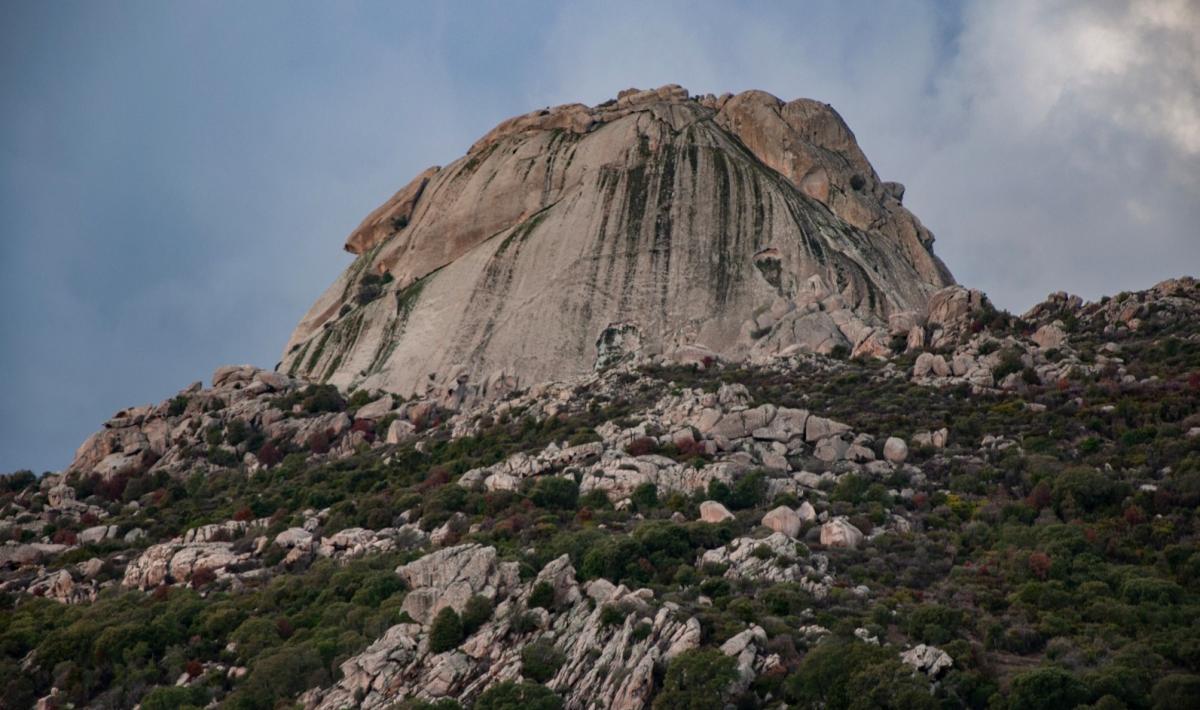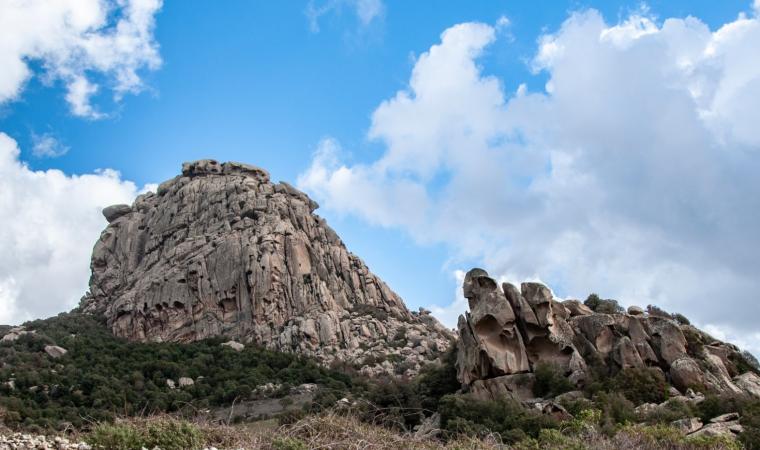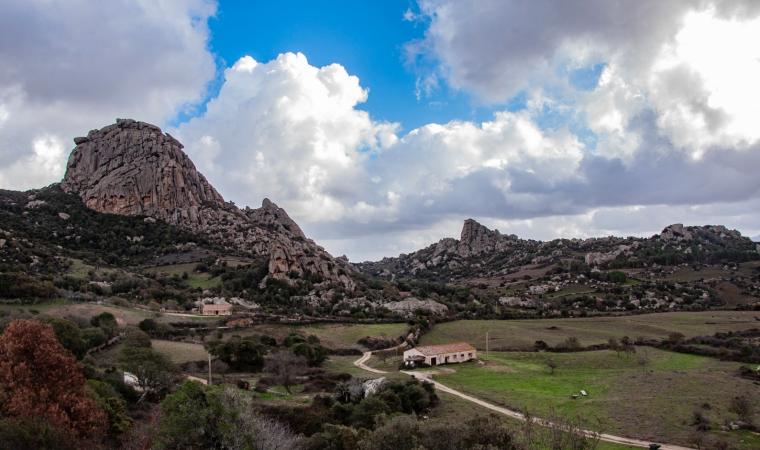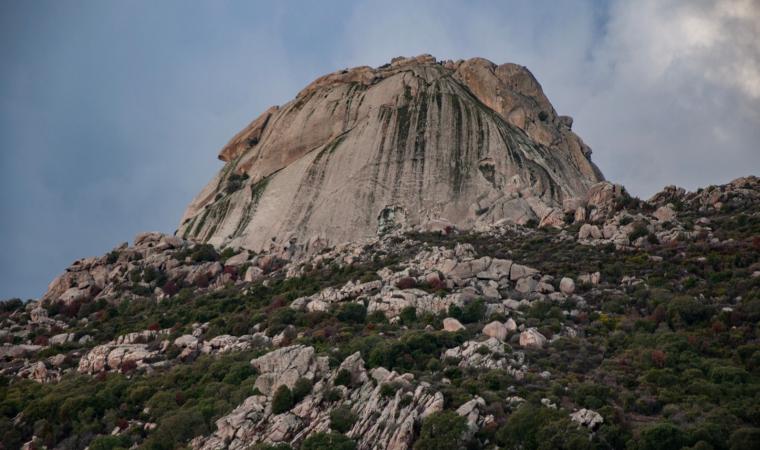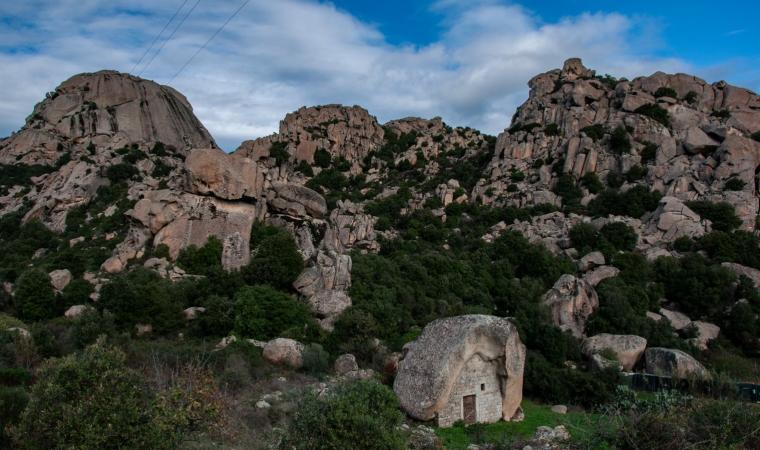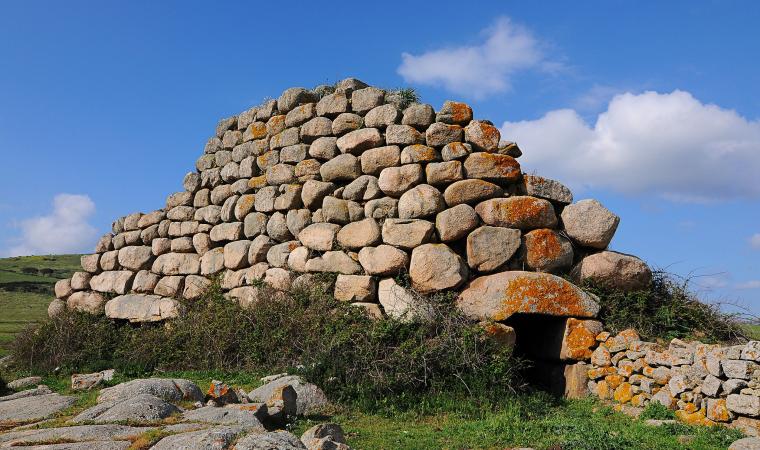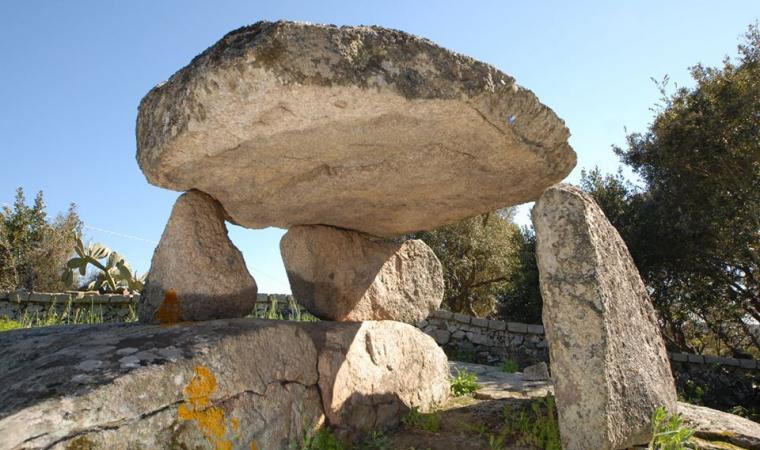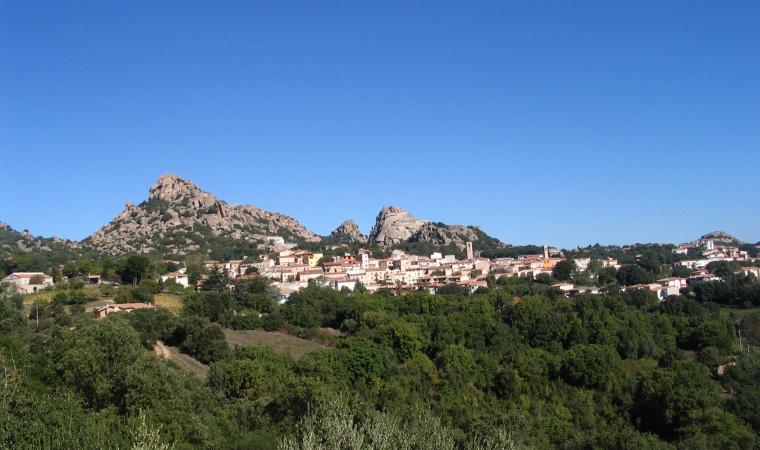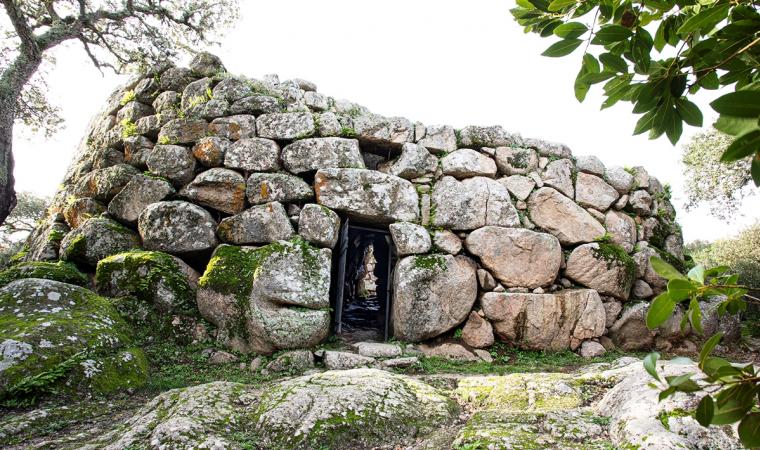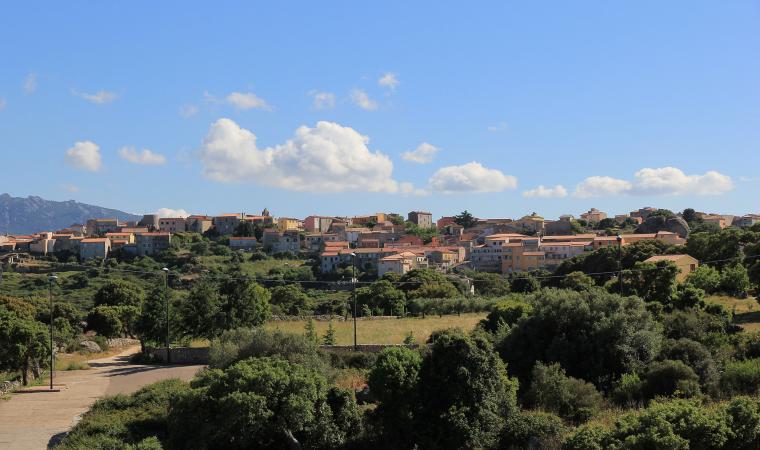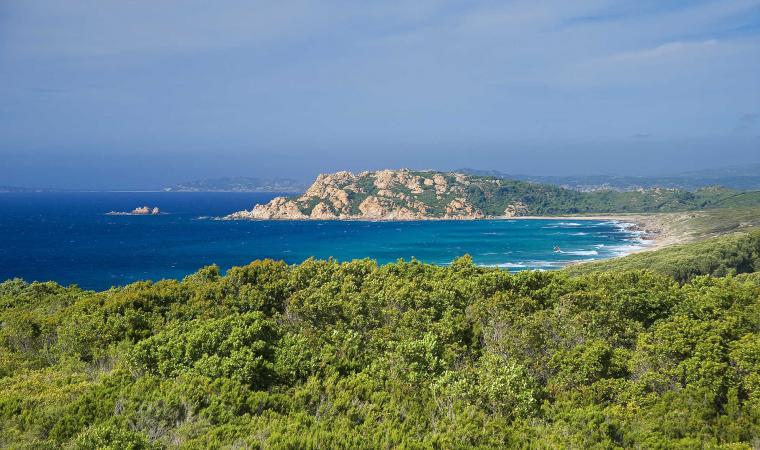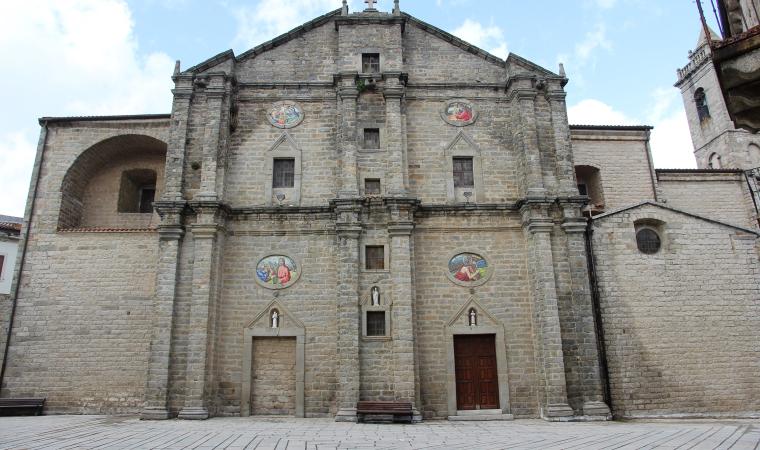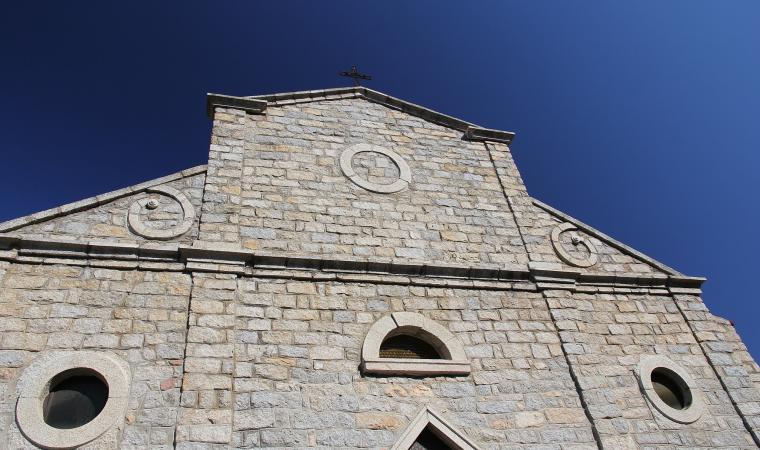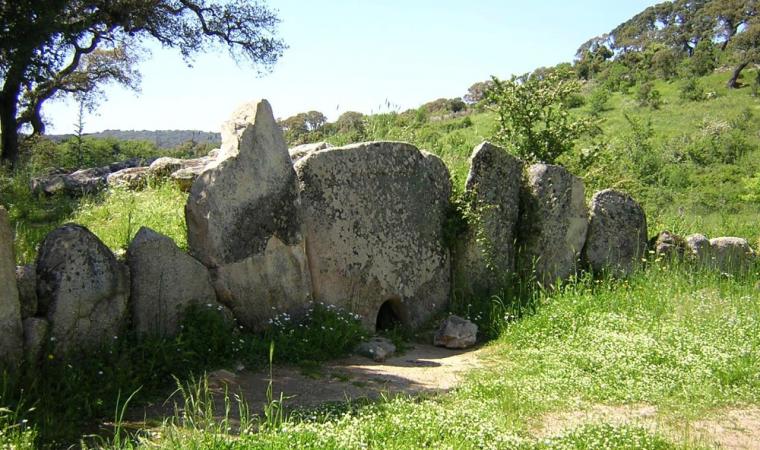Its outline resembles an Italian panettone Christmas cake and it is the largest granite monolith in Sardinia. Monte Pulchiana stands out on a plateau in the territory of Tempio Pausania, even though the nearest residential area is the village of Aggius. It is an inselberg, that is a granite elevation, small and isolated and shaped like a dome; it was created out of the decomposition of the rock, resulting from the chemical process of hydrolysis and then due to the action of water. It is unique on the Island, both for its size and for the landscape around it: a real granite garden, with tafoni, tors and agglomerations of rocky blocks. It is not by chance that the Sardinian Regional Authority declared it a natural monument in 1994. You will notice its unusual colour, with pink and yellowish tinges, due to oxidation. The eastern wall of the elevation is crossed diagonally by a vein of quartzite and is particularly admired by experts and climbing enthusiasts. It contains the only road in Gallura with a spit and one of the very rare cases in Sardinia open in granite rock faces.
From the summit, at an altitude of 673 metres, you will have a view of the whole of Gallura, overlooking the hills and towns of Luras, Calangianus and Tempio, as far as the Limbara massif. At the foot of Mount Limbara, on the plateau of Lu Parisi, there is a layer of Mediterranean scrub, rockroses and cork forests, crossed by pleasant trekking trails. You will also see junipers and asphodels, as well as several endemic plants, such as Corsican broom. The wildlife includes foxes, hares and martens, as well as ravens, buzzards, barn owls and examples of Barbary partridge circling the peak. Another feature, not far from the Pulchiana, is the stone building also known as the ‘house of the smurfs’. In reality, its true name is Conca Fraicata: it is a small shelter obtained from a rocky cavity. In its presence, amidst rocks and vegetation, you will feel like you are on the set of a fantasy film.
The area is dotted with archaeological evidence: various tafoni, known as the ‘Conche di Pulchiana’ were used in prehistoric times for burials. In some cases, you will notice traces of little dry stone walls built to enclose the tombs. Nearby, there are also the remains of corridor nuraghi and domus de Janas. Moving west, you can explore the Piana dei Grandi Sassi (Plain of the Big Stones) – also known as ‘Valle della Luna’ (Valley of the Moon). It is an unspoilt landscape in a basin bordered by a ‘frame’ of granite ridges, with oddly-shaped rocks. The nuraghe Izzana was built in the heart of the valley and is possibly the largest building in Gallura dating back to the Bronze Age.

